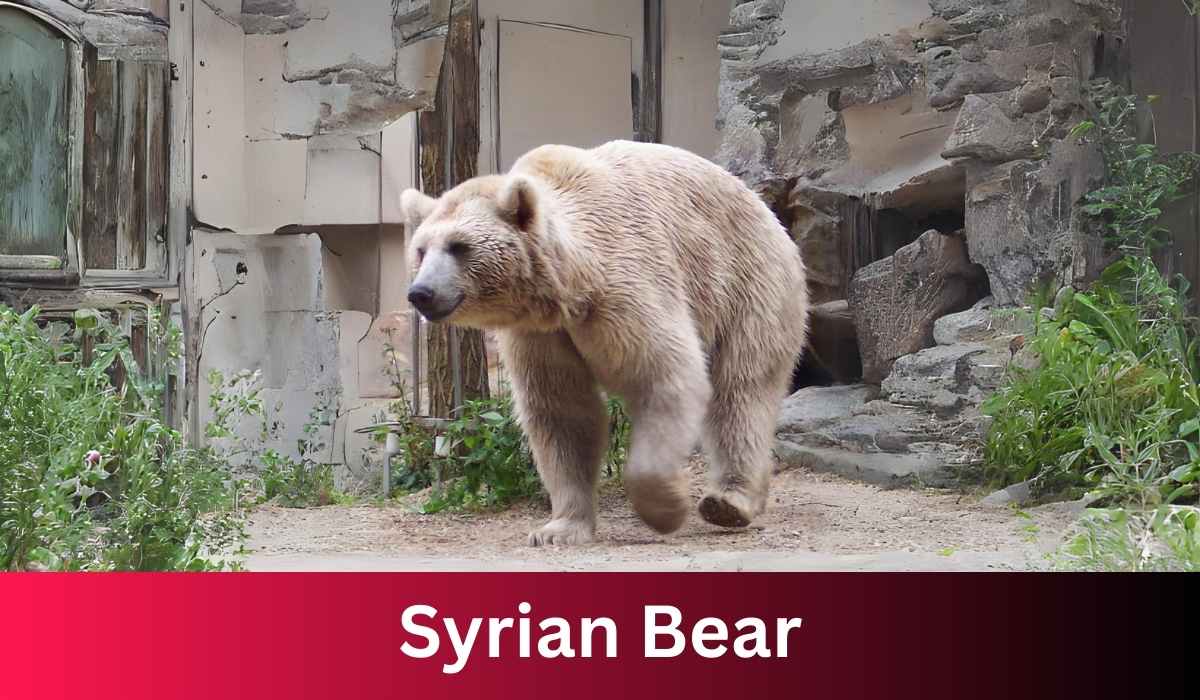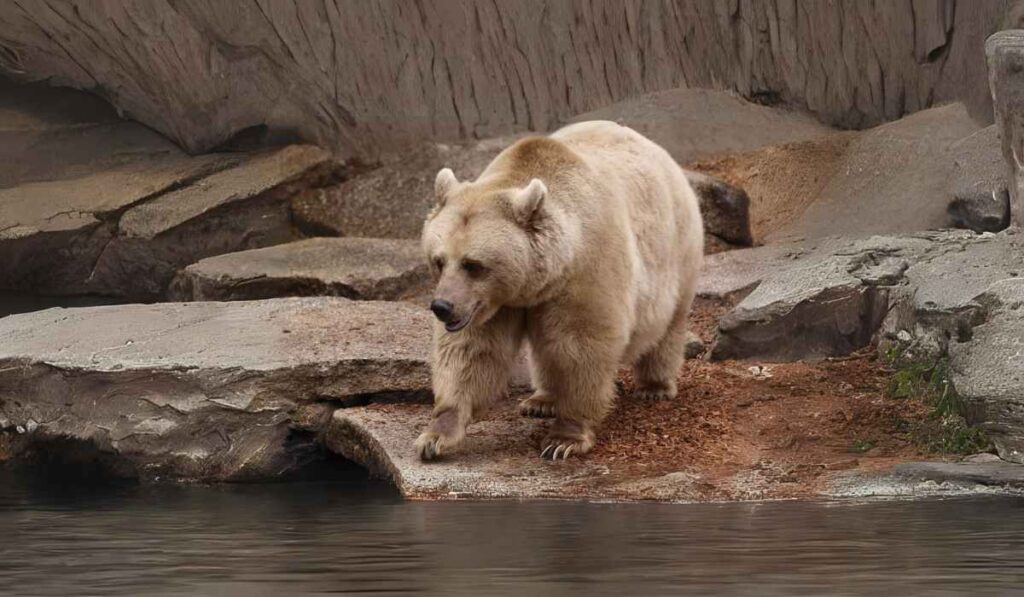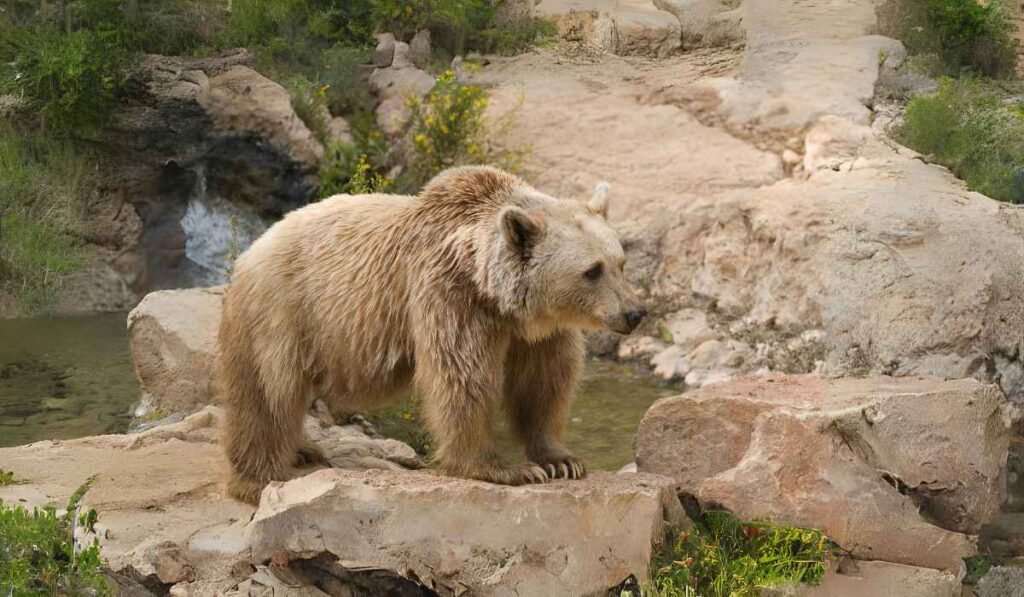
The Syrian bear, scientifically known as Ursus arctos syriacus, holds a mysterious presence in the Middle East.
Amidst the ancient landscapes of the region, where history and nature intertwine, this majestic creature roams.
In this comprehensive exploration, we delve into the intriguing realm of the Syrian bear, shedding light on its habitat, characteristics, conservation status, and significance in the Middle Eastern ecosystem.
The Enigmatic Syrian Bear: A Closer Look

Understanding the Syrian Bear
The Syrian bear, often referred to as the Syrian brown bear, stands as a symbol of resilience in the Middle East.
Despite the region’s arid climate and diverse landscapes, these bears have managed to carve out their existence in select areas.
Their adaptation to the challenging environment reflects their evolutionary prowess, captivating researchers and wildlife enthusiasts alike.
Distribution of Syrian Bears
One might question, “Are there bears in the Middle East?” Indeed, Syria, Turkey, and parts of Iraq host populations of these remarkable creatures.
Furthermore, there are notable sightings of Syrian bears in regions like Israel, sparking curiosity about their presence in this ancient land.
Their distribution across geopolitical boundaries highlights the need for transboundary conservation efforts to ensure their survival.
Unveiling the Habitat of Syrian Bears
Bears in Israel
The presence of bears in Israel might come as a surprise to many. While not as common as in other regions, sightings have occurred, especially in the northern parts of the country.
These sightings prompt us to ponder upon the coexistence of wildlife and human settlements, emphasizing the importance of habitat preservation and wildlife corridors.
Bears in Turkey and Iraq
Turkey, with its diverse terrain, offers a suitable habitat for Syrian bears. Similarly, parts of Iraq, despite tumultuous times, harbor populations of these elusive creatures.
Understanding their habitat sheds light on the intricate relationship between wildlife and geopolitical factors, urging policymakers to consider conservation measures in conflict-affected regions.
Syrian Brown Bear Size and Adaptations
The Syrian brown bear exhibits a robust physique, adapted to the rugged landscapes it inhabits. With males reaching sizes of up to 250 kilograms, these bears command respect in their environment.
Their thick fur provides insulation against harsh winters, while their keen sense of smell aids in foraging for food in diverse habitats, including forests, mountains, and grasslands.
Lifespan and Behavior of Syrian Bears

Lifespan
Intriguingly, the lifespan of Syrian brown bears ranges from 20 to 30 years, showcasing their ability to adapt and thrive in challenging conditions.
Despite facing threats such as habitat loss and human-wildlife conflicts, these bears display resilience, with some individuals living longer in protected areas where conservation efforts are implemented effectively.
Behavior
Syrian bears exhibit a range of behaviors, from solitary foraging to familial bonds. While they are predominantly solitary animals, they may form temporary social groups during the mating season or when resources are abundant.
Mothers nurture their cubs with care, teaching them essential survival skills before they venture out on their own.
Conservation Efforts and Challenges
Conservation Initiatives
Efforts to protect Syrian bears and their habitats have gained momentum in recent years. Conservation organizations collaborate with local communities to raise awareness and implement strategies for coexistence.
Initiatives such as habitat restoration, anti-poaching patrols, and educational programs aim to mitigate threats and ensure the long-term survival of these iconic species.
Challenges Ahead
Despite progress, challenges such as habitat loss, poaching, and human-wildlife conflicts persist. Rapid urbanization, agricultural expansion, and infrastructure development encroach upon bear habitats, fragmenting populations and reducing available resources.
Addressing these challenges requires a multifaceted approach, blending scientific research, policy advocacy, and community engagement to foster sustainable coexistence between humans and bears.
Also Read: Unveiling the Power: Coyote Bite Force vs Dog Bite Force
Conclusion
Syrian bear stands as a testament to the resilience of nature amidst geopolitical complexities. As we unravel the mysteries surrounding these majestic creatures, we gain insight into the delicate balance of ecosystems in the Middle East.
By fostering conservation efforts and promoting harmony between humans and wildlife, we ensure that future generations can continue to marvel at the enduring legacy of the Syrian bear.
Let us strive to protect and preserve these enigmatic creatures, honoring their place in the rich tapestry of life in the Middle East.
FAQs
What is a Syrian bear?
A Syrian bear, also known as Ursus arctos syriacus or Syrian brown bear, is a subspecies of the brown bear native to the Middle East.
Are there bears in the Middle East?
Yes, Syrian bears inhabit various regions of the Middle East, including Syria, Turkey, parts of Iraq, and sporadic sightings in Israel.
What is the size of a Syrian brown bear?
Syrian brown bears can reach sizes of up to 250 kilograms for males, exhibiting a robust physique suited to their rugged habitats.
What is the lifespan of Syrian bears?
Syrian bears typically have a lifespan ranging from 20 to 30 years, showcasing their adaptability and resilience in challenging environments.
What are the main threats to Syrian bears?
Habitat loss, poaching, and human-wildlife conflicts are among the primary threats facing Syrian bears, necessitating conservation efforts to ensure their survival.
What conservation initiatives are in place for Syrian bears?
Conservation organizations collaborate with local communities to implement initiatives such as habitat restoration, anti-poaching patrols, and educational programs to protect Syrian bears and their habitats.
Where can I see Syrian bears in the wild?
Syrian bears can be observed in select regions of the Middle East, including protected areas in Syria, Turkey, and Iraq. However, sightings are relatively rare due to their elusive nature and habitat preferences.
How can I contribute to the conservation of Syrian bears?
Individuals can support conservation efforts by raising awareness, supporting reputable conservation organizations, and advocating for policies that protect bear habitats and mitigate human-wildlife conflicts.
Are Syrian bears dangerous to humans?
While Syrian bears generally avoid confrontations with humans, encounters can occur, especially in areas where their habitats overlap with human settlements. It’s essential to exercise caution and respect their space when in bear territory.
Why are Syrian bears important to the ecosystem?
Syrian bears play a crucial role in maintaining ecosystem balance by regulating prey populations and influencing vegetation dynamics. As apex predators, they contribute to the overall health and biodiversity of their habitats in the Middle East.








